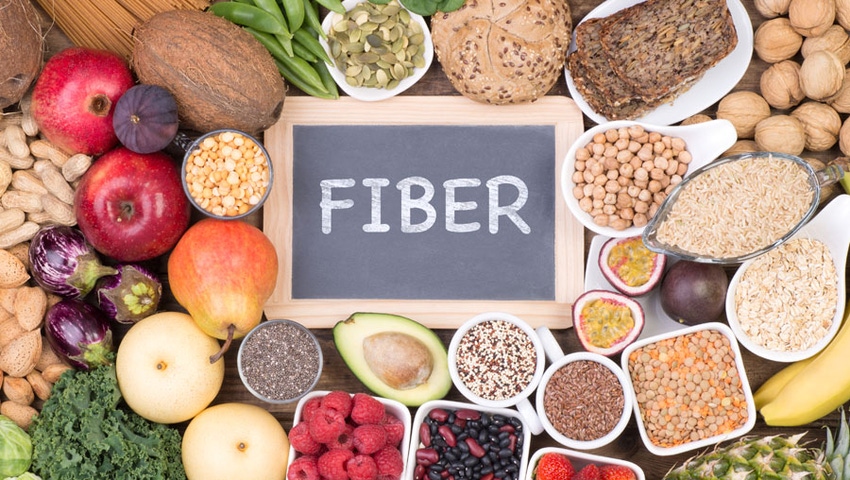FDA's new final rule on nutrition facts labeling includes a definition for dietary fiber and an increase of its daily reference value (DRV) from 25 to 28 g. Many food manufacturers will need to adjust the fiber DRV listed on their labeling to comply with these changes.

Fiber is recognized as part of a healthy, balanced diet. It can lower cholesterol levels,1 control blood sugar2 and create feelings of fullness that help prevent overeating.3 It has also been known to reduce the risk of cardiovascular disease (CVD),4 and promote efficient digestion.5 Because of these benefits, it comes as no surprise food manufacturers make claims that their products are “high in," “a good source of” or “enriched with" fiber. Some also claim their products “may reduce the risk of heart disease and some types of cancers.” While fiber claims may be attractive to consumers, manufacturers must be sure their products meet FDA requirements for making such claims. Additionally, manufacturers need be aware of upcoming changes to FDA's definition of fiber that may affect whether claims on previously eligible products are permitted to remain.
On May 27, 2016, FDA published the final rule on changes to the Nutrition Facts label for packaged food and beverages sold in the United States. The rule includes numerous updates, including the introduction of a regulatory definition for “dietary fiber” and an increase of its daily reference value (DRV) from 25 to 28 g. Many food manufacturers will need to adjust the fiber DRV listed on their labeling to comply with these changes, so it is prudent to understand what these regulations entail.
FDA's definition of fiber
Prior to the updated labeling rules, a regulatory definition of dietary fiber had not been established. FDA previously placed credit in methods established by the scientific association AOAC International to identify and measure the quantity of fiber in foods. Through these methods, numerous non-digestible carbohydrates were recognized as fiber, regardless of whether they provided a scientifically valid health benefit. FDA's new regulatory definition narrows this classification, providing specific criteria for what may be listed as dietary fiber on the nutrition facts label.
FDA’s definition requires non-digestible carbohydrates to possess a “physiological effect that benefits human health” to be considered dietary fiber. This benefit can be a decrease of cholesterol or blood pressure, a feeling of fullness or improved bowel function, all of which are often expected effects of fiber.
The fiber definition inherently accepts non-digestible carbohydrates and lignin that are “intrinsic and intact” in plants. This means the carbohydrates originate in a plant food and are used without their components removed or destroyed. Since they are together, with surrounding nutrients contained within a plant cell, they produce a health benefit that satisfies FDA’s requirements. Carbohydrates that are the subject of authorized health claims, such as beta-glucan soluble fiber and barley beta-fiber, will also be accepted under this definition.
Other non-digestible carbohydrates that are “isolated” or removed from the plant they originated in, and synthetically created, non-digestible carbohydrates both require evidence of a benefit to human health to meet the dietary fiber classification. FDA stated it will determine which carbohydrates are acceptable through response to a citizen petition demonstrating these benefits. Following the final rule on changes to the nutrition facts label, FDA released a public list of 26 dietary fibers, for which it has requested data be submitted to determine whether they should be added to the regulatory definition for dietary fiber.
According to FDA guidelines, manufacturers should determine the new fiber content of their food products by subtracting the quantity of added, non-digestible carbohydrates that do not meet the regulatory definition from the quantity of fiber measured through acceptable AOAC methods. This amount should be used to determine the new percent daily value of dietary fiber on a product’s label, accounting for the updated DRV of 28 g.
What it means for food manufacturers
Since FDA’s definition of dietary fiber emphasized the need for clear, scientifically valid benefits to human health, carbohydrates that were previously included in the dietary fiber declaration may lose their eligibility to be included in the quantity listed on a product’s nutrition facts label. Additionally, as a result of the updates to fiber’s DRV, many manufacturers will be required to adjust the percent daily value on their label, regardless of whether the classification of their fibers has changed. Both circumstances may affect manufacturers’ eligibility to make fiber claims on their labeling.
FDA has specific requirements for certain dietary fiber claims. A product must contain 20 percent or more of the DRV per reference amount customarily consumed (RACC) to be considered “high” in fiber and between 10 and 19 percent to make a “good source of fiber” claim. Manufacturers that have previously made these claims may no longer be allowed to, if their products do not contain sufficient fiber to satisfy these percentages under the new DRV. Manufacturers may be able to petition FDA to include additional carbohydrates, used in their products, to the list of accepted dietary fibers. In some cases, a manufacturer may need to reformulate a product to maintain permission to make fiber claims.
When these requirements take effect
The changes to fiber's definition and DRV are effective upon the compliance dates of FDA's new food labeling rules. Originally, the compliance date for the rules was July 26, 2018. However, on Sept. 29, 2017, FDA proposed to extend the compliance date to Jan. 1, 2020. Businesses with less than US$10 million in annual food sales will have an additional year to comply.
The compliance dates for the new labeling rules might seem distant, but it may take some time to prepare for the regulations. FDA proposed the compliance date extension after industry informed the agency that "they have significant concerns about their ability to update all their labels by the compliance dates due to issues regarding (among other things) the need for upgrades to labeling software, the need to obtain nutrition information from suppliers, the number of products that would need new labels and a limited time for reformulation of products," according to FDA.
As the deadline approaches, laboratory expenses may also increase due to a high volume of food manufacturers requesting updated tests for fiber (and other nutrients that require changes under the rule). For a smooth transition into these requirements, manufacturers are urged to review carbohydrates used in their products and determine which are accepted under FDA’s definition of dietary fiber or petition specific carbohydrates to be added to FDA’s list. By taking conscientious and proactive steps to meet these rules now, food manufacturers can work to ensure compliance, while minimizing costs before the deadline in the coming years.
Anna Benevente is a senior regulatory specialist at Registrar Corp., an FDA consulting firm that helps companies comply with FDA regulation. She has been assisting companies with U.S. FDA regulations since 2009 and has researched over 370 products to determine whether they meet the FDA requirements for compliance.
References
Winkvist A et al. “Longitudinal 10-year changes in dietary intake and associations with cardio-metabolic risk factors in the Northern Sweden Health and Disease Study.” Nutr J. 2017 Mar 28;16(1):20. DOI: 10.1186/s12937-017-0241-x.
Zhong V et al. “Dietary intake and risk of non-severe hypoglycemia in adolescents with type 1 diabetes.” J Diabetes Complications. 2017 Aug;31(8):1340-1347. DOI: 10.1016/j.jdiacomp.2017.04.017.
Reverri E et al. “Assessing beans as a source of intrinsic fiber on satiety in men and women with metabolic syndrome.” Appetite. 2017 Nov 1;118:75-81. DOI: 10.1016/j.appet.2017.07.013.
Zhang D et al. “Evidence of Dietary Improvement and Preventable Costs of Cardiovascular Disease.” Am J Cardiol. 2017 Aug 1. pii: S0002-9149(17)31241-9. DOI: 10.1016/j.amjcard.2017.07.068.
Wegh C et al. “The effect of fiber and prebiotics on children's gastrointestinal disorders and microbiome.” Expert Rev Gastroenterol Hepatol. 2017 Aug 1:1-15. DOI: 10.1080/17474124.2017.1359539.
About the Author(s)
You May Also Like




.png?width=800&auto=webp&quality=80&disable=upscale)